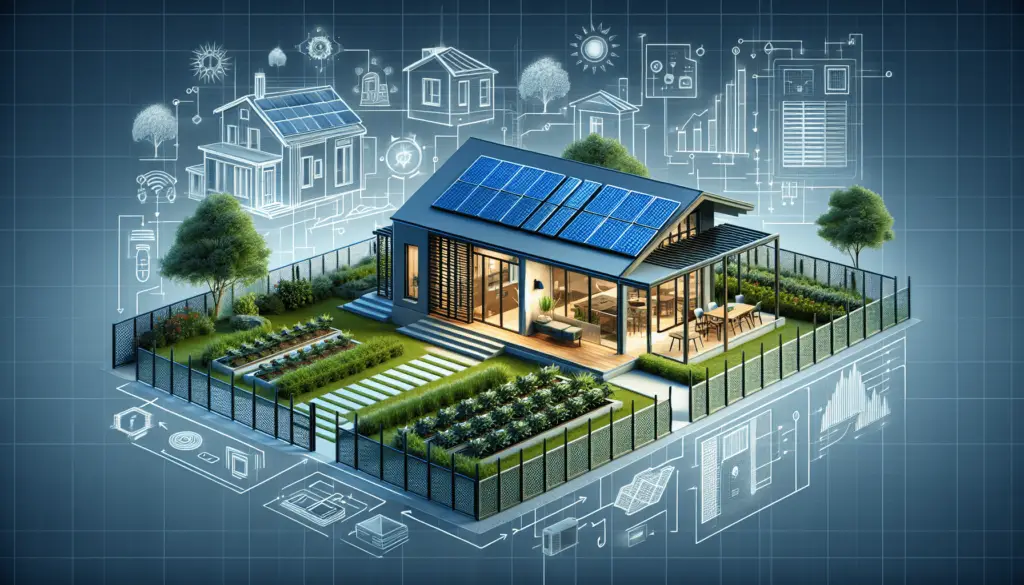Have you ever considered designing your home with security and sustainability in mind? Prepping has become increasingly popular, and creating a prepper-friendly home can provide peace of mind in uncertain times. In this article, you will learn about the architectural considerations for building a home that prioritizes security and sustainability.
Why Design a Prepper-Friendly Home?
Designing a prepper-friendly home is not just about preparing for worst-case scenarios; it’s also about creating a safe and sustainable living space for you and your family. By incorporating security features and sustainable systems into your home design, you can enhance its resilience and self-sufficiency.
Feeling Safe and Secure
When you design a prepper-friendly home, you are essentially creating a fortress that can protect you and your loved ones from any potential threats. Whether it’s natural disasters, economic downturns, or social unrest, having a secure home can give you peace of mind and a sense of control over your environment.
Embracing Sustainability
In addition to security, sustainability is a key aspect of prepper-friendly home design. By incorporating energy-efficient systems, renewable resources, and eco-friendly materials into your home, you can reduce your environmental impact and lower your utility bills. Building a sustainable home is not only good for the planet but also for your long-term financial health.
Architectural Considerations for Security
When designing a prepper-friendly home, there are several architectural considerations you should keep in mind to enhance security and resilience.
Secure Entrances
One of the first things to consider is the security of your entrances. Install sturdy doors with deadbolts, reinforced frames, and peepholes to prevent break-ins. Consider adding security cameras, motion sensors, and smart locks for added protection.
Perimeter Defense
Creating a secure perimeter around your home is essential for keeping intruders out. Install fencing, gates, and security lighting to deter trespassers. Consider planting thorny bushes or hedges around your property as a natural deterrent.
Safe Rooms/Bunkers
Having a designated safe room or bunker in your home can provide a secure retreat in case of emergencies. Choose a location that is easily accessible but well-hidden, such as a basement or underground shelter. Stock your safe room with emergency supplies, communication devices, and first aid kits.
Fire Protection
In addition to physical security, fire protection is also crucial in a prepper-friendly home. Install smoke detectors, fire extinguishers, and sprinkler systems to prevent and control fires. Consider using fire-resistant materials in your home’s construction to minimize the risk of fire damage.

Architectural Considerations for Sustainability
Incorporating sustainable features into your home design is essential for creating a prepper-friendly living space that is self-sufficient and environmentally friendly.
Solar Power
One of the most popular sustainable features for prepper-friendly homes is solar power. Install solar panels on your roof to generate electricity for your home, reducing reliance on the grid. You can also use solar water heaters to provide hot water for your household needs.
Rainwater Harvesting
Collecting and storing rainwater is a great way to reduce your reliance on municipal water sources. Install rain barrels or cisterns to capture rainwater from your roof for irrigation, flushing toilets, and other non-potable uses. Make sure to filter and treat the water before using it for drinking or cooking.
Energy-Efficient Appliances
Investing in energy-efficient appliances can help reduce your home’s energy consumption and lower your utility bills. Look for appliances with high Energy Star ratings, such as refrigerators, washing machines, and HVAC systems. Consider using smart thermostats and programmable lighting to further optimize energy usage.
Green Building Materials
When constructing or renovating your home, choose green building materials that are sustainable, recyclable, and environmentally friendly. Opt for bamboo flooring, recycled glass countertops, and low-VOC paints to reduce your carbon footprint and improve indoor air quality.
Combining Security and Sustainability
For the ultimate prepper-friendly home, it’s important to combine security and sustainability features seamlessly. By integrating both aspects into your home design, you can create a living space that is not only safe and resilient but also eco-friendly and cost-effective.
Integrated Systems
Consider integrating your security and sustainability systems for maximum efficiency and convenience. For example, you can use smart home technology to control your security cameras, lighting, and HVAC systems remotely. Connect your solar panels to battery storage systems for backup power in case of outages.
Multi-Functional Spaces
Design your home with multi-functional spaces that serve both security and sustainability purposes. For example, you can use a greenhouse as a secure food source and a rainwater collection point. Convert a spare room into a safe room with hidden storage for emergency supplies.
Community Collaboration
Building a prepper-friendly home doesn’t have to be a solitary endeavor. Work with your neighbors and community to create a network of support and resources. Share skills, tools, and supplies with other preppers to enhance collective security and sustainability.

Conclusion
Designing a prepper-friendly home involves thoughtful planning, creativity, and a commitment to security and sustainability. By considering architectural considerations such as secure entrances, safe rooms, solar power, and green building materials, you can create a home that is resilient, self-sufficient, and environmentally friendly. Whether you are preparing for emergencies or simply want to live a more sustainable lifestyle, a prepper-friendly home can provide lasting benefits for you and your family.
